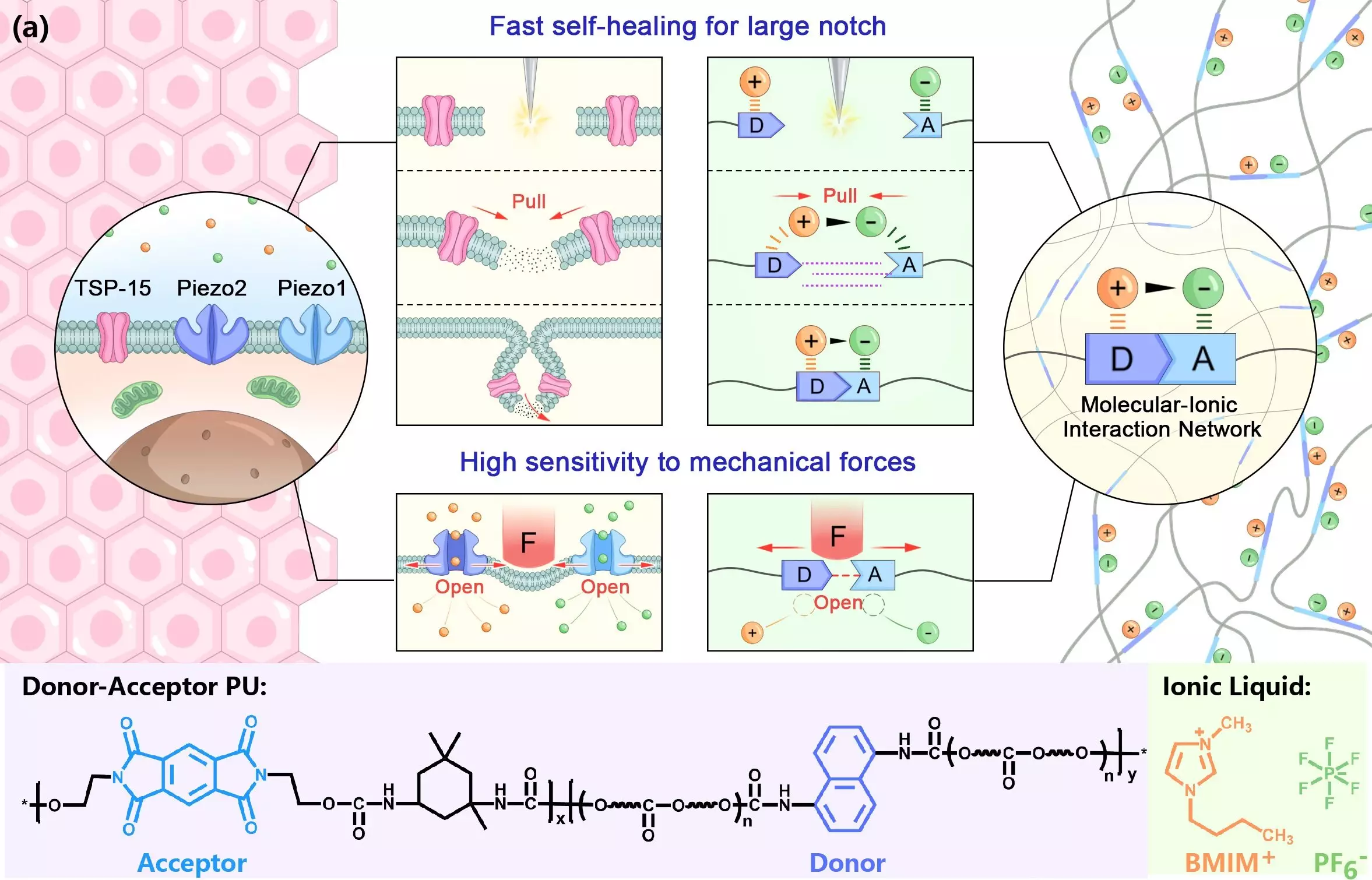In the ever-expanding field of biomimetic engineering, the emergence of synthetic skins that mimic human sensory capabilities is captivating researchers and industries alike. A recent groundbreaking development by a team led by Professor Zhu Jin, based at the Ningbo Institute of Materials Technology and Engineering (NIMTE), introduces an innovative mechano-responsive elastomer named i-DAPU. This material sets a new benchmark for iontronic skin technologies, operationalizing the dual functions of self-healing and sensitive tactile sensing. The implications of i-DAPU extend beyond academic curiosity, igniting potential advancements in health monitoring and robotic applications.
Understanding Mechano-Responsive Technology
At its core, i-DAPU exemplifies a significant leap forward in how we understand and implement mechano-responsive technologies. Current traditional methods have often prioritized singular performance improvements—either aiming to enhance sensitivity or self-healing capabilities but seldom both. This limitation has created a substantial gap in fully utilizing these materials in real-world applications. By drawing inspiration from natural transmembrane proteins, the researchers ingeniously synthesized functional molecular-ionic sites that not only bolster the elastomer’s healing properties but simultaneously enhance its sensitivity. This dual focus is nothing short of revolutionary, positioning i-DAPU as a frontrunner in the quest for materials that can adaptively respond to environmental stimuli.
Outstanding Performance Metrics
The performance benchmarks achieved by i-DAPU are impressive, bringing the concept of smart material functionality to a new zenith. With a self-healing efficiency of 72 µm min-1 and a remarkable dual-channel sensitivity of 7012.05 kPa-1, the implications for device integration are extraordinary. These numbers translate into an ability for the skin to recover from damage rapidly while maintaining high sensitivity, something paramount in applications that require nuanced tactile feedback, such as robotic touch and prosthetics. The DA-skin also reaches a noteworthy accuracy of 99.2% in muscle strength classification through sophisticated signal processing algorithms, which is crucial for real-time health monitoring.
Implications for the Future of Healthcare
The ramifications of i-DAPU stretch far beyond its mechanical properties; they tap deeply into the realm of practical healthcare applications. The capacity to detect subtle changes in muscle strength through an intelligent skin interface introduces transformative potential for patient care. Whether utilized in rehabilitation settings or wearable health monitors, such capacities could redefine how healthcare providers interact with and understand their patients’ conditions. Beyond mere functionality, the very essence of integrating healing properties with sensitivity signifies a monumental shift towards more responsive healthcare technologies.
A New Era in Sustainable Technologies
As societies increasingly turn toward sustainable solutions, the development of materials like i-DAPU symbolizes more than just technological advancement; it represents a strategic direction toward environmentally responsible innovations. The synthesis of a mechano-responsive elastomer highlights the possibility of creating materials that endure, adapt, and recover rather than simply being replaced. With the demand for sustainable practices growing across all sectors, the integration of such advanced materials into everyday life could usher in an era where synthetic technologies harmonize with natural processes, ultimately benefiting both human health and the environment.

